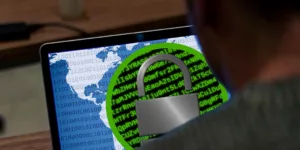The digital threat landscape is in constant flux. It’s tough even for cybersecurity experts who devote 40-plus-hour weeks to the topic to stay on top of everything, let alone founders and role-players for whom digital security is just one of dozens of top-of-mind concerns.
To make matters worse, not all digital threats are created equal. Ransomware, a diverse type of malware that literally holds infected systems hostage until the affected party pays up, is one threat that’s remained fairly low-key for years.
Thanks to high-profile strains like WannaCry and Petya, that’s changing. And fast. If you’re not yet aware of this rapidly metastasizing threat, here’s what you need to know to mitigate the risk of ransomware.
Filter .exe Files
Ransomware generally runs off .exe files, so it pays to be suspicious of that specific extension. Not all .exe files are bad, of course, but they definitely deserve heightened scrutiny. Use your email suite’s scanning and filtering tools to identify potentially hazardous .exe files before you blithely download them. Be sure to enable hidden file extensions as well: some ransomware varieties conceal their .exe extensions to avoid detection.
Back Up All Your Data (And Keep Backing It Up)
This is perhaps the most important step you can take to reduce the impact of a ransomware infection. Use a ransomware protection solution that automatically backs your data up to the cloud at frequent intervals — every 15 minutes is ideal. Manually or automatically back up your files and data to external storage media too. You can’t have too many backups.
Apply Software Updates and Patches Right Away
Jump on software patches and updates as soon as they become available. To avoid lags, automate the update process to the extent possible, making sure to schedule major system updates during low-use periods.
Keep Your Anti-Malware Suite Up-to-Date
Reputable anti-malware suites protect against known (and sometimes unknown) varieties of malware. Make sure yours is up-to-date, and turn on its automatic update function if not automatically enabled.
Use a VPN for Regular Browsing (Including on Mobile Devices)
Malware infections often originate on unfamiliar WiFi networks. If you’re traveling or using a corporate device on a public network, be sure to enable its “safe browsing” mode or third-party virtual private network (VPN). This is especially important on mobile devices, which are vulnerable to compromise and often serve as vectors to infect other machines on the company network.
Never Provide Personal Information or Credentials in Email Responses
No matter how legit the email seems, never provide personal information or login credentials in the response body. This might as well be an open invitation to attack your machine. Don’t click email links, either, unless you’re 110% sure that the sender is who they say they are.
Cut Off Your Internet Connection When a Suspected Attack Begins
If you do open a ransomware file, don’t panic. Cut off your Internet connection as soon as possible. A fast enough response could abort the encryption process before it fully disables your machine, mitigating the extent of the damage.
Don’t Pay the Ransom
If you’ve followed the above steps (and others recommended by ransomware experts), you shouldn’t need to pay a ransom. Even if your machine is compromised, you’ll have a complete file backup that you can deploy once you’ve isolated the problem. Besides, paying the ransom rewards bad behavior.
How Vulnerable Is Your Business?
If you’re not sure whether you fully understand all your vulnerabilities, the first thing you need to do is conduct a thorough digital risk analysis. Remember, ransomware is just one of many serious threats to your company’s cyber-integrity. The more you know, the better prepared you’ll be to address unknown unknowns: risks of which you can’t even conceive at the moment.








